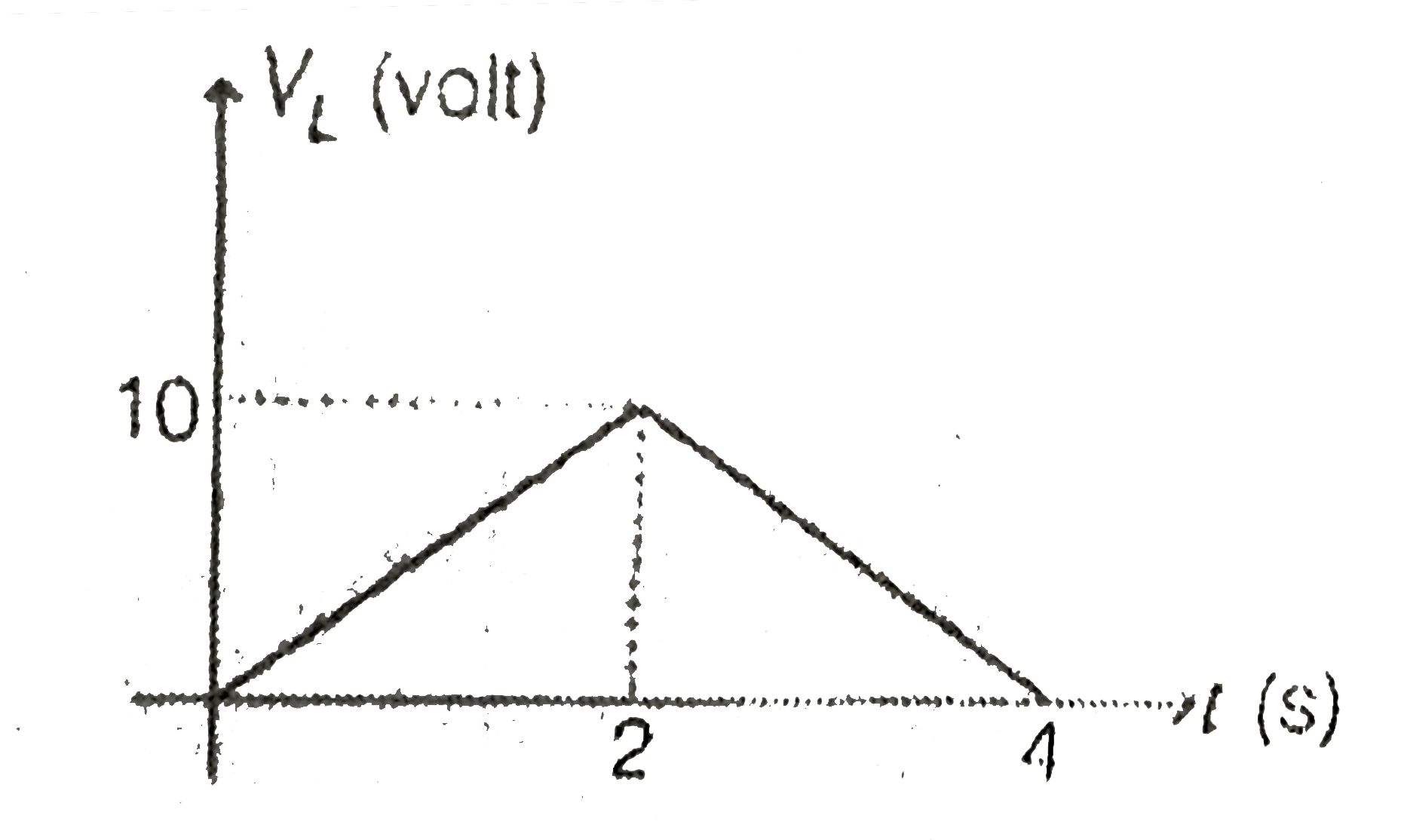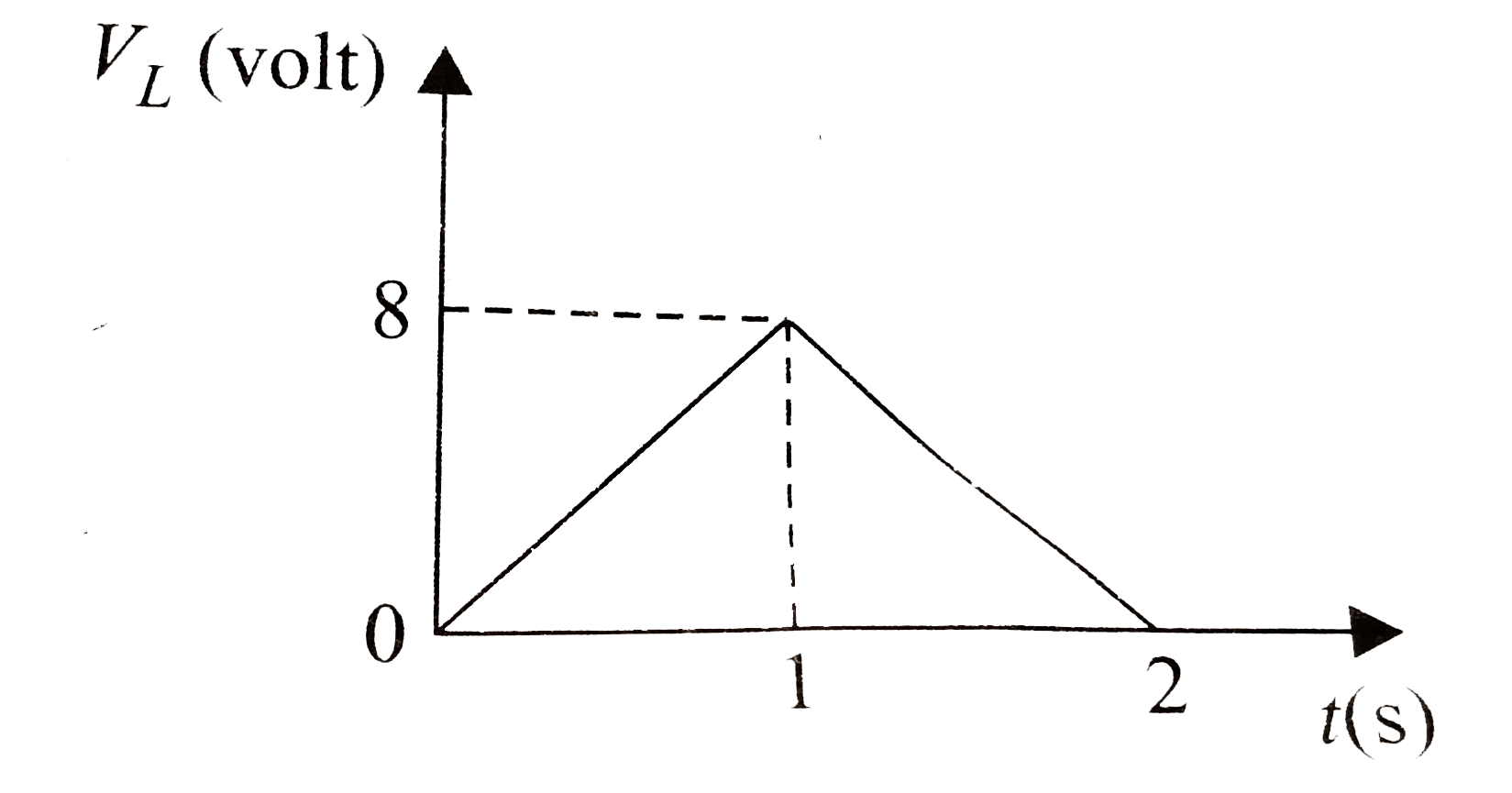The potential difference across a 10H inductor as a function of time is shown in the figure. At t=0 current is zero. Then

The current in the inductor at t=6 is 3 amp
The current in the inductor at t=1 sec is 1/4 amp
The current in the inductor at t=4 is 5/2 amp.
The variation of current versus time parabola.
The correct Answer is:A, B, C, D
VL=Ldidt⇒Ldi=VLdt
L∫di=∫VLd=12.6.10=30
L(if−ii)=30 Amp
if=3010=3 amp
for t<2
VL=102t=5t
∫i0Ldi=∫VLdt=5∫10tdt
L(i−0)=52
⇒i=1/4
For t≥2
VL=(15−52t)
∫i1Ldi=∫42(15−52t)dt
⇒i=5/2 amp
Similar Questions
The potentiak difference across a 2H inductor as a function of time is shown in the figure. At time t=0, current is zero.

Current versus time graph across the inductor will be
View SolutionThe potential difference across a 2H inductor as a function of time is shown in figure. At time t=0, current is zero
Current t=2 second is

View SolutionThe potential difference across a 2-H inductor as a function of time is shown in Fig. At time t = 0, current is zero.

Current at t = 1 s is
View SolutionThe potential difference across a 2-H inductor as a function of time is shown in Fig. At time t = 0, current is zero.

The variation of current versus time is
View SolutionThe potential difference across a 2-H inductor as a function of time is shown in Fig. At time t=0, current is zero.

Area under VL−t graph gives
View SolutionThe potential difference across a 150mH inductor as a function of time is shown in figure. Assume that the initial value of the current in the inductor is zero. What is the current when t=2.0ms? and t=4.0ms ?

View SolutionThe potential difference across a 4 H inductor vary with time is as shown. The current is Zero at t=0, Then the current at time t=2s

View SolutionPotential difference across AB in the networ shown is

View SolutionPotential difference across AB in the network shown is

View SolutionPotential difference across AB in the network shown is

View Solution
